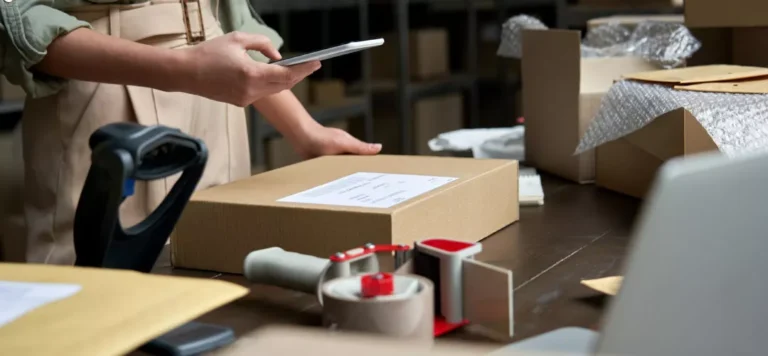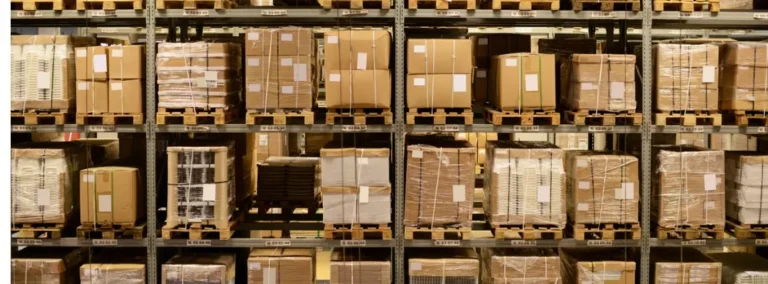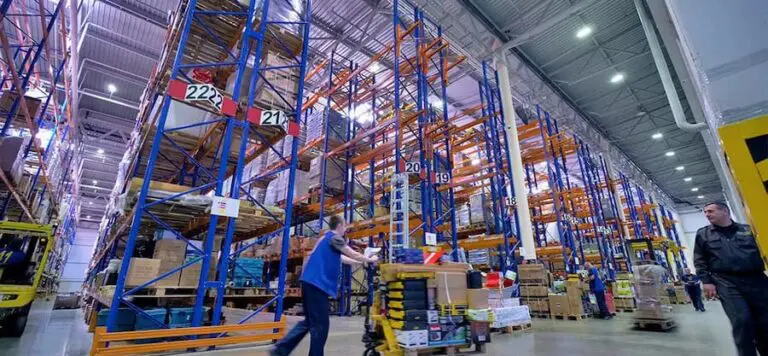Start with Warehousing Receiving to Fix Fulfillment Problems
“An ounce of prevention is worth a pound of cure.” Benjamin Franklin purportedly wrote this line to say that it’s typically easier to prevent a problem from occurring versus resolving an issue that’s already begun. Dentists celebrate this principle daily. I once heard a dentist say to the teenager in the chair next to me, “Floss now or a root canal, or maybe death, later – the choice is yours.” Dire, I know. Franklin was referencing city fire preparedness, the dentist was referencing tooth decay, and believe it or not, the same applies to warehousing fulfillment.
What is the Warehouse Receiving Process?
In a problematic fulfillment operation, oftentimes many things have gone awry:
- The inventory isn’t accurate
- Orders aren’t shipping on time
- Incorrect box sizes are being used on outbound orders
All of the above could result in either damaged products or increased transportation spending. The list goes on. There are few things more de-motivating for a business than when the rest of the business does well and sales thrive, but the operations arm fails to execute.
A common response is to address the symptoms:
- Conduct a physical inventory
- Bring in additional people to pick and pack
- Assign a senior team member to closely check the box sizes that are selected for each package
These are important steps that can be helpful. Unfortunately, they don’t address what is frequently the underlying cause of the problems: it’s similar to the patient getting a root canal after the fact instead of proactively flossing. In fulfillment, I’ve seen that one area is often the “root” cause of problems: The Inbound or Receiving Process (that’s right, we’re now making dental puns). In other words, the product has not been received into the warehouse accurately and with the correct dimensions. Here, understanding the concept of transloading can provide more insights.
Here’s a scenario WSI has worked through with many new customers who are not accustomed to inbound logistics management. An inbound delivery arrives at an order fulfillment center with many cases. The customer wants inbounds to be received at the “case-level”. The “Advanced Shipping Notice” (effectively a packing list) tells the warehouse that each case should contain 20 black socks. As a check, we open one of the cases and determine that in fact there are 16 red socks. Moreover, the customer had thought the item dimensions of the pair of socks were 1” x 1” x 3”, but in reality, the dimensions are 0.5” x 0.5” x 6”. What would have happened if we hadn’t noticed these discrepancies?
Why the Receiving Process Matters in a Warehouse
First, the inventory takes a hit. Not knowing any better, a Warehouse Management System (WMS) receives the 20 black socks in inventory, meaning the inventory is now wrong. What the system thinks is on-hand is not actually there. This is where understanding the different types of warehousing can be beneficial. Moreover, a contemporary WMS will utilize “directed put-away” to store the product in the optimal location based on SKU velocity and inventory consolidation possibilities (to take up less floor space and save the customer money). If the system has the wrong SKU or count, this practice—intended to drive efficiency and lower costs—becomes a mess: “A” velocity SKUs are put into “C” velocity slots and vice versa; locations are overstuffed with product; etc. Even the best software relies on having good data. Garbage in, garbage out.
Second, the picking process is compromised. With the WMS’ inventory off-kilter, Pickers are directed to pick from locations with the wrong product or that are out-of-stock. Now chaos breaks loose — trying desperately to fulfill orders, Pickers start searching everywhere for the product on the order. They take products from other locations vs. the one that was system directed, meaning yet another location’s inventory is undermined without the WMS realizing it. Scanning products (a best practice to ensure order accuracy) becomes less frequent since the WMS may reject the pick from an alternate location. We’re in trouble now.
Finally, the pack-out process begins driving up costs due to inaccurate dimensions. A good modern WMS suggests a box size for Packers based on the product’s cubic footprint. If the dimensions are off, it will cause the system to suggest packaging sizes that are too small (risking damage) or too big (driving up transportation cost). These are both unacceptable outcomes.
How to Solve Receiving Process Problems
If you think you might be having issues driven by your inbound/receiving process, focus on the following basics:
- Ensure all ASNs are accurate and are systematically communicated before the physical product arrives. This will allow the site to more easily validate whether there are any discrepancies that need to be dealt with.
- If receiving at the case level, “sample” 10-20% of those cases — open up a portion of the cases to ensure that the SKU and count match what they are supposed to be.
- If accuracy is becoming especially problematic or cases contain mixed SKUs, receive inbounds at the each level. This is time consuming, but will ensure you know what inventory you have actually received.
- Measure and weigh any new SKU to ensure the WMS has accurate weight and dimensions.
- If you can withstand the spend, get a WMS that provides the team with system-directed steps on the inbounds.
- Assign some of the site’s most experienced team members to oversee the inbound receipts. Nothing beats pairing great people with great technology.
- Track data on inbound discrepancies and provide an ongoing feedback loop to suppliers so that they can improve performance.
The inbound process oftentimes doesn’t get the limelight, but in warehousing, it is often the place where games are won and lost…where cities are saved from destruction by fire…where teeth are saved from…plaque buildup? You get the point. Prevent problems from starting in the first place and you’ll be in a great position to succeed.
Partner with WSI, Warehouse Receiving Experts
Partnering with a 3PL is a great way to take inbound process management off your hands. Our nationwide network of warehouse locations are staffed with logistics experts who can take your fulfillment game to the next level. Talk to us to learn more. Talk to us to learn more about our transloading services and expertise in the chemicals industry amongst many others!
About the Author

Mikayla Josefchuk
Mikayla Josefchuk is WSI’s Inside Sales and Marketing Representative, providing customers with insights on tailored supply chain solutions including warehousing, transportation, and eCommerce fulfillment. A business school graduate of the University of Missouri – Columbia, Mikayla focuses on business development and content creation. When she’s not at work, Mikayla spends her time on walks with her dog, Boone.









